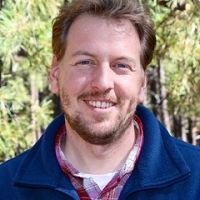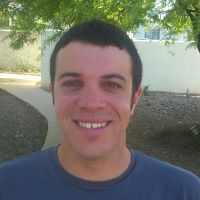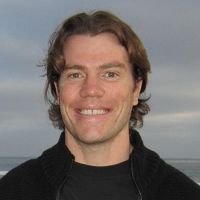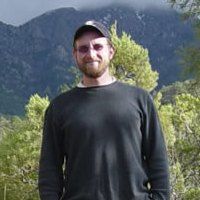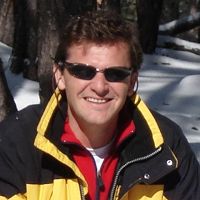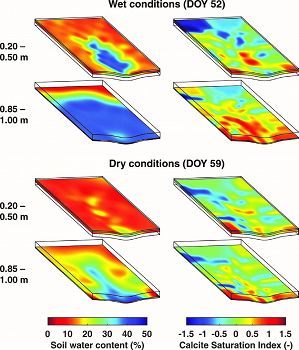Volkmann et al., 2018
Controlled Experiments of Hillslope Coevolution at the Biosphere 2 Landscape Evolution Observatory: Toward Prediction of Coupled Hydrological, Biogeochemical, and Ecological Change
Volkmann T.H.M., Sengupta A., Pangle L.A., Dontsova K., Barron-Gafford G.A., Harman C.J., Niu G.-Y., Meredith L.K., Abramson N., Meira Neto A.A., Wang Y., Adams J.R., Breshears D.D., Bugaj A., Chorover J., Cueva A., DeLong S.B., Durcik M., Ferre T.P.A., Hunt E.A., Huxman T.E., Kim M., Maier R.M., Monson R.K., Pelletier J.D., Pohlmann M., Rasmussen C., Ruiz J., Saleska S.R., Schaap M.G., Sibayan M., Tuller M., van Haren J.L.M., Zeng X. and Troch P.A. (2018)
in: Hydrology of Artificial and Controlled Experiments (eds. Jiu-Fu Liu and Wei-Zu Gu), IntechOpen, pp. 25-74
-
Catalina-Jemez, INVESTIGATOR
-
Christina, INVESTIGATOR
-
Catalina-Jemez, INVESTIGATOR, COLLABORATOR
-
Catalina-Jemez, STAFF
-
Catalina-Jemez, INVESTIGATOR
-
Catalina-Jemez, INVESTIGATOR
-
Catalina-Jemez, STAFF
-
Catalina-Jemez, INVESTIGATOR
-
Catalina-Jemez, INVESTIGATOR
-
Catalina-Jemez, GRAD STUDENT
-
Catalina-Jemez, INVESTIGATOR
-
Catalina-Jemez, INVESTIGATOR
Abstract
Three-dimensional interpolations of volumetric soil water content (SWC; left) and calcite saturation index (right) projected onto a LEO hillslope model at two depth intervals (0.20–0.50 m and 85–1.00 m) and two sampling dates.
Understanding the process interactions and feedbacks among water, porous geological media, microbes, and vascular plants is crucial for improving predictions of the response of Earth’s critical zone to future climatic conditions. However, the integrated coevolution of landscapes under change is notoriously difficult to investigate. Laboratory studies are limited in spatial and temporal scale, while field studies lack observational density and control. To bridge the gap between controlled laboratory and uncontrollable field studies, the University of Arizona built a macrocosm experiment of unprecedented scale: the Landscape Evolution Observatory (LEO). LEO comprises three replicated, heavily instrumented, hillslope-scale model landscapes within the environmentally controlled Biosphere 2 facility. The model landscapes were designed to initially be simple and purely abiotic, enabling scientists to observe each step in the landscapes’ evolution as they undergo physical, chemical, and biological changes over many years. This chapter describes the model systems and associated research facilities and illustrates how LEO allows for tracking of multiscale matter and energy fluxes at a level of detail impossible in field experiments. Initial sensor, sampler, and soil coring data are already providing insights into the tight linkages between water flow, weathering, and microbial community development. These interacting processes are anticipated to drive the model systems to increasingly complex states and will be impacted by the introduction of vascular plants and changes in climatic regimes over the years to come. By intensively monitoring the evolutionary trajectory, integrating data with mathematical models, and fostering community-wide collaborations, we envision that emergent landscape structures and functions can be linked, and significant progress can be made toward predicting the coupled hydro-biogeochemical and ecological responses to global change.
Citation
Volkmann T.H.M., Sengupta A., Pangle L.A., Dontsova K., Barron-Gafford G.A., Harman C.J., Niu G.-Y., Meredith L.K., Abramson N., Meira Neto A.A., Wang Y., Adams J.R., Breshears D.D., Bugaj A., Chorover J., Cueva A., DeLong S.B., Durcik M., Ferre T.P.A., Hunt E.A., Huxman T.E., Kim M., Maier R.M., Monson R.K., Pelletier J.D., Pohlmann M., Rasmussen C., Ruiz J., Saleska S.R., Schaap M.G., Sibayan M., Tuller M., van Haren J.L.M., Zeng X. and Troch P.A. (2018): Controlled Experiments of Hillslope Coevolution at the Biosphere 2 Landscape Evolution Observatory: Toward Prediction of Coupled Hydrological, Biogeochemical, and Ecological Change. in: Hydrology of Artificial and Controlled Experiments (eds. Jiu-Fu Liu and Wei-Zu Gu), IntechOpen, pp. 25-74. DOI: 10.5772/intechopen.72325
Explore Further
